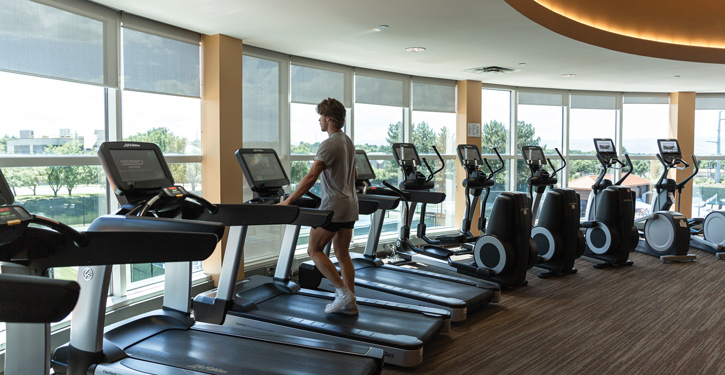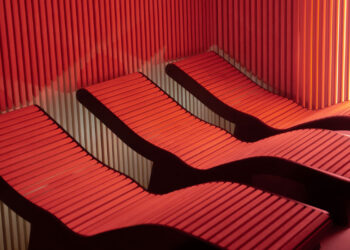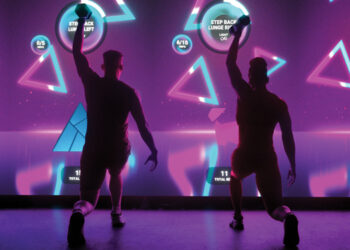Cardio training has long been a staple in fitness clubs, but its role is evolving as clubs adapt to new trends, technologies and shifting member needs. To usher cardio training into the modern age, many operators are shifting how they’re approaching it.
“For the longest time, people saw cardio as a weight loss tool but we’ve really tried to rebrand cardio to say this is for your heart, lungs and health metrics,” explained Steve Boring, the fitness director at Rochester Athletic Club (RAC). “We’re shifting the focus to be about long-term health and giving our members a complete experience with a combination of training.”
As such, RAC is focusing on how cardio exercises promote longevity and sustainable practices. Post-COVID-19 pandemic, members are prioritizing cardio that supports long-term health rather than just short-term gains. “More people are looking at longevity in those results than just a quick, acute change,” explained Boring.
This mindset has fueled a resurgence of steady-state and low-impact cardio, giving members a way to stay consistent without risking burnout or injury.
To support these evolving preferences, RAC relies on Precor Adaptive Motion Trainers. These machines allow users to customize their stride length, offering flexibility based on how their body feels each day. This adaptability helps members feel confident their workouts are both effective and safe, encouraging long-term adherence.
Personalization is one feature of cardio equipment that’s growing in demand. Angela Zaun, the director of personal training at Club Greenwood, sees members demanding smarter cardio experiences. The club’s Life Fitness equipment provides interactive features and real-time feedback, keeping members informed and motivated. These machines go beyond basic metrics, helping people track progress and achieve their goals more effectively.
“An industry trend we’re definitely seeing is the ability to have everything very personalized, and a lot of that’s coming with technology advancing,” said Zaun. “People want to have new and different choices, and to have their cardio equipment tell them more. They want to get more information and have it be really easy to use.”
More advanced technology isn’t the only change Club Greenwood’s members are wanting. The club is also being innovative in how it’s promoting community through cardio. Group X cardio classes remain popular, and new run and bike clubs are designed to foster camaraderie. At Club Greenwood, cardio workouts can be social experiences instead of solitary workouts.
“We’re trying to use cardio in a way that helps us build community within the club and camaraderie between members,” explained Zaun. “Our run and bike clubs are connecting people who are very dedicated to cardio. It really helps us build that community environment for our members and helps the club with retention. When they build those relationships, they’re happy and want to come back to the club.”
Community is also at the heart of cardio programming at Loggerhead Fitness. For Rick Opton, the owner and general manager, group dynamics are key to making cardio more enjoyable. Small group training (SGT) sessions combine functional movements, heart rate monitoring and the power of shared effort.
“SGT can produce some excellent cardio outcomes without being on a machine,” explained Opton. “You get to experience the challenge and excitement together. It’s taught by certified personal trainers which is key because it’s someone working with people to build their heart health rather than a performer.”
Another way Loggerhead Fitness enhances social experiences in these group settings is with the Myzone heart rate monitoring system. The technology gamifies workouts, giving members real-time feedback and leveling the playing field between different fitness levels. This approach transforms cardio from a solitary grind into a social, motivating experience where everyone feels included.
“30-year-olds are working out with 60-year-olds, and everyone’s having a blast,” explained Opton. “In terms of programming, we’re big Myzone users. It gives everyone in the class real-time feedback, and trainers know how to use it too. The data they get from the monitors motivates people to try harder. When you gamify it or make it a bit more competitive, people try harder and ultimately effort rules.”
Another strategy a different club is using to increase engagement across multiple groups is bringing cardio to multiple environments.
FITNESS SF is having free outdoor classes at a local park in downtown San Francisco. Troy Macfarland, the director of marketing, highlighted the impact of FITNESS SF’s Salesforce Park cardio classes as a way to engage with non-members. In a setting where run clubs would be difficult, these classes are a great option to increase brand awareness.
Similarly, the club’s aquatics program is thriving in an urban area where pools are scarce. It’s a non-traditional form of cardio but has proven valuable to the club as swimming is a form of low-impact cardio. FITNESS SF’s ability to offer diverse cardio experiences — from treadmills and stair climbers to outdoor and aquatics options — ensures they meet the needs of their urban clientele.
“People love the fact they have some choice,” explained Macfarland. “We like to offer everything because then we can appeal to more people.”
In an industry where trends come and go, the core principles of cardio remain the same: movement, connection and adaptability. By embracing evolving programming, cardio transforms into something more than just a workout — it’s an experience members want to return to, day after day.










